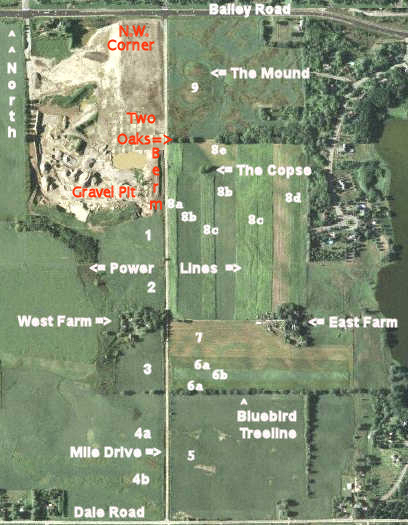
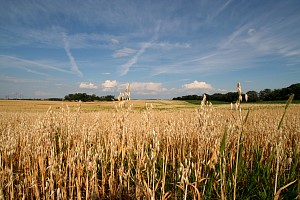
|
|
This low angle shot shows oats with the west farm in the background.
The name Minnesota comes from two Dakota Indian words, mine, meaning
"water," and sota, broadly interpreted as "the varying color of a turbid,
cloudy sky." Together they read "cloudy, churning waters," or "sky-tinted
waters," and aptly describe Minnesota as river and lake country.
The state motto, cast by early settlers, "L'Etoil du Nord" (French for
"The Star of the North") describes the state's central and northernmost
position among the 48 coterminous states.
|
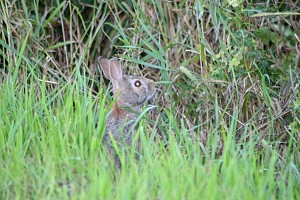
|
|
Enlarge this photo to see the gold color in the cottentail's eye. I am not using a flash,
so I don't think this is the "red eye" effect.
|
|
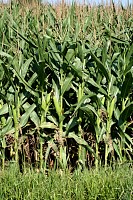
Some of the corn that has had enough moisture so far. This is most likely because it
doesn't have sandy soil directly beneath it.
|
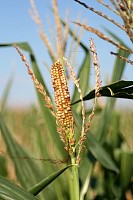
Here at the top of a corn stalk is a tassel-ear.
A corn plant exhibits both male flowers and female flowers.
Both flowers are initially bisexual, but during the course of development the female components (gynoecia) of the male flowers and the male components (stamens) of the female flowers abort, resulting in tassel (male) and ear (female) development. Once in a while, the upper flower that typically becomes a tassel instead forms a combination of male and female floral parts on the same reproductive structure. This "tassel-ear" is an odd-looking affair and is found most commonly of a corn plant along the edges of a field. Without a protective husk covering, the kernels that develop on tassel-ears are at the mercy of weathering and exposed to hungry birds. Consequently, harvestable good quality grain from tassel-ears is a rarity.
|
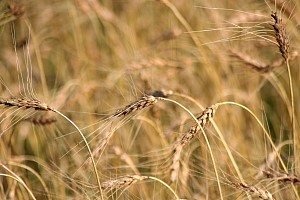
The barley heads are dry and bent.
|
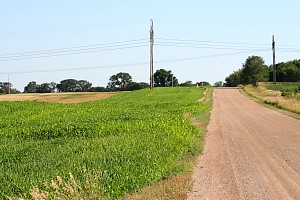
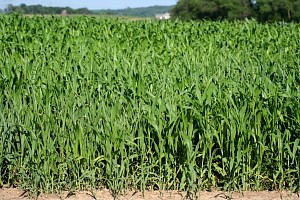
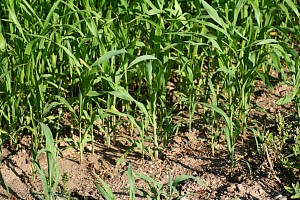 Planted in a strip running north-south in Fields #6 and #7 is
sudan grass (Sorghum bicolor ).
Sudan grass is a tall grass plant primarily used as feed for livestock. It is
closely related to grain sorghum. Sudan grass grows from 6 1/2 to 10 feet tall.
With its extensive root
system, sudan grass
can effectively take up and store soil
nitrogen.
Planted in a strip running north-south in Fields #6 and #7 is
sudan grass (Sorghum bicolor ).
Sudan grass is a tall grass plant primarily used as feed for livestock. It is
closely related to grain sorghum. Sudan grass grows from 6 1/2 to 10 feet tall.
With its extensive root
system, sudan grass
can effectively take up and store soil
nitrogen.
|
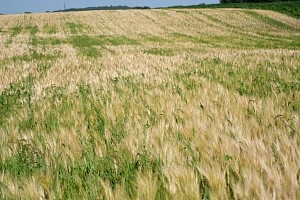
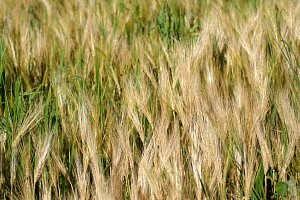
The winter wheat is ready to be cut. You can see green weeds that have contaminated
the field.
|
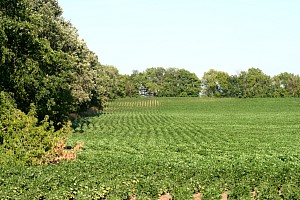
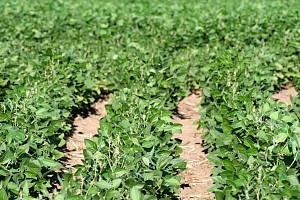
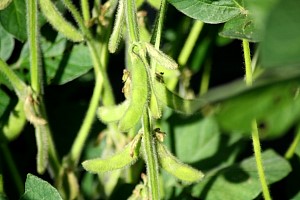 Soybeans. The pods with the beans inside have formed. Neither of the two rightmost
pictures are focused correctly on the beans, but you can get and idea of the fine
hairs everywhere on the plant.
Soybeans. The pods with the beans inside have formed. Neither of the two rightmost
pictures are focused correctly on the beans, but you can get and idea of the fine
hairs everywhere on the plant.
|
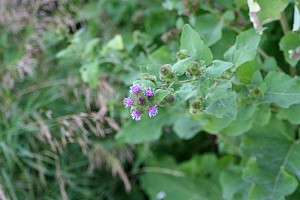
The purple flowers on the burrs of Common burdock (Arctium minus). This
is Common burdock because the flower florets are elongate, purple, and the heads
are located on short stalks connected to the stem.
Common burdock is a Native of Europe.
Return to Flora
|
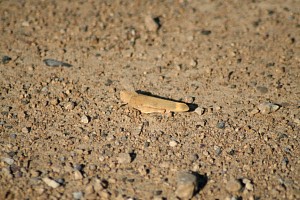
On the road sits a locust or short horned grasshopper. This one is of the family Acrididae
and is a common species here in Minnesota, Dissosteira carolina (L.).
|
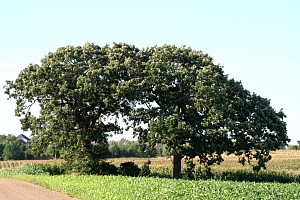
Twin Oaks in mid-summer.
|
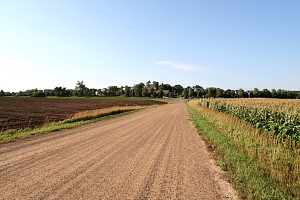
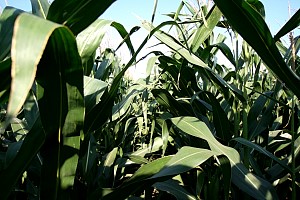
I walked a little into this corn field and took a picture.
|
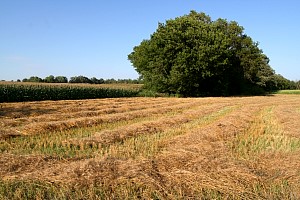
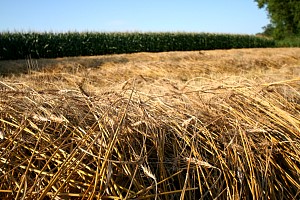
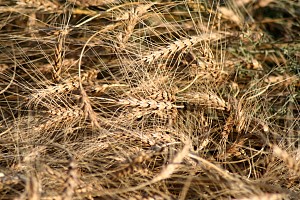 The elderly farmer has cut his barley and it sits in windrows to dry in the sun.
Being a hobby farmer, Gene grows a variety of crops - corn, wheat, barley, oats, hay,
and sedan grass. Return to Consumables
The elderly farmer has cut his barley and it sits in windrows to dry in the sun.
Being a hobby farmer, Gene grows a variety of crops - corn, wheat, barley, oats, hay,
and sedan grass. Return to Consumables
|
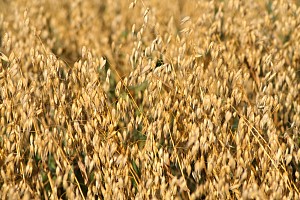
The oats in Field #5.
Return to Consumables
|
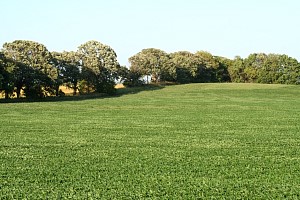
A vista of Field #5 with Bluebird Treeline in the distance.
|
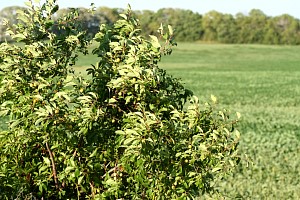
These wild plums are not ripe yet ... soon. It's very windy.
|